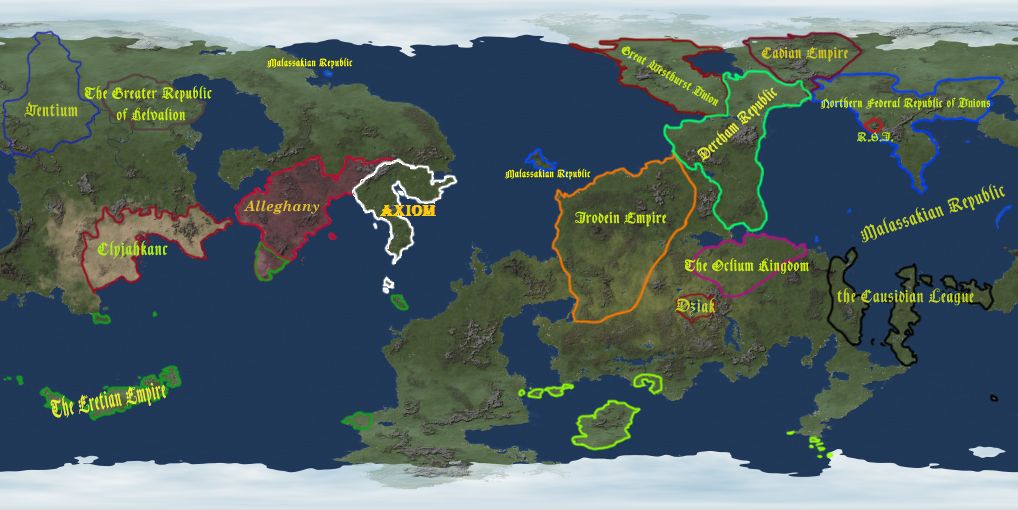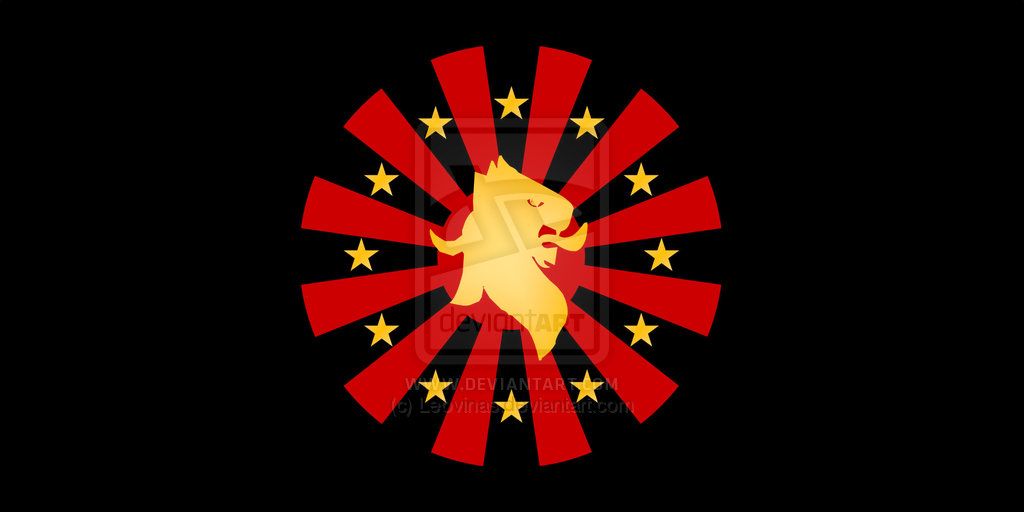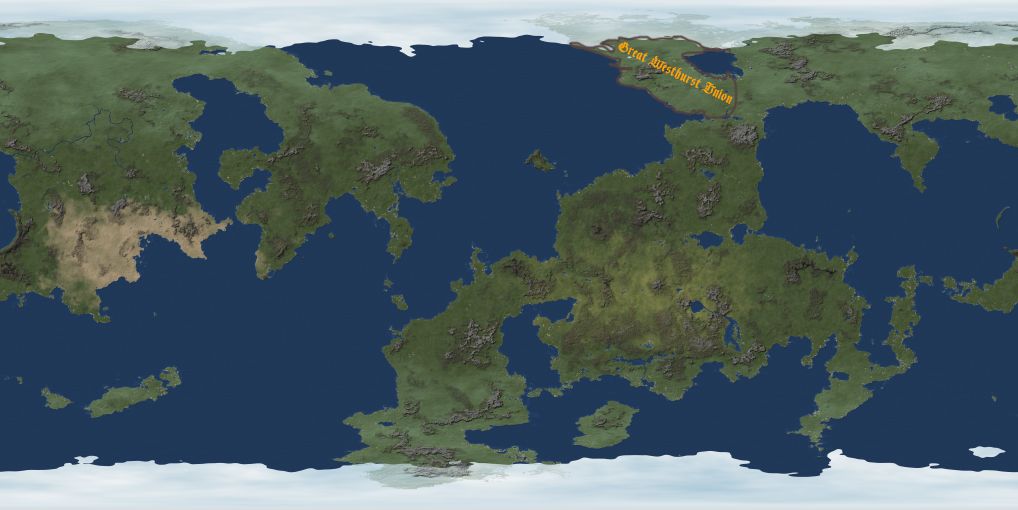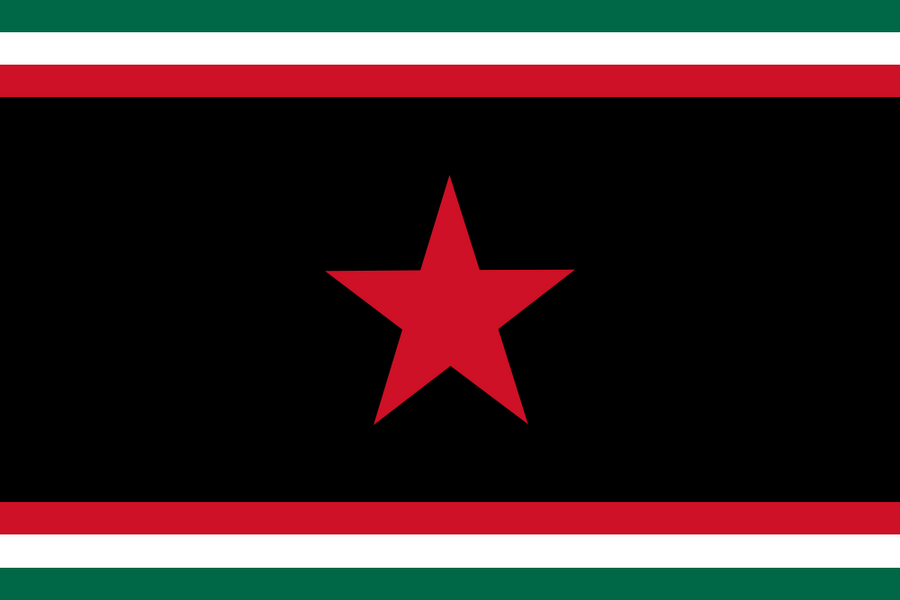 THE REVOLUTIONARY SYNDICALIST INTERNATIONALHistory
THE REVOLUTIONARY SYNDICALIST INTERNATIONALHistoryThe RSI's history can be traced to several earlier working-class movements and socialist intellectual traditions. About ninety years ago, an assembly of labor leaders, professors, and other sympathizers founded the Syndicalist International as a space of exchange, cooperation, and mutual aid. The Syndintern movement began thrive in universities, poor communities, and among disfranchised groups in the North more generally. In response, some states and corporations began to engage in repression: companies hired thugs, courts passed injunctions, troops were deployed, and syndicalist parties were banned.
This provoked a split in Syndintern, between Gradualists (who believed they could reform existing systems over time) and Radicals (who believed direct action – and violent rebellion if necessary – were the only sure methods of attaining collective liberation). Tensions brewed for years until finally, the International narrowly voted not to endorse or support a general strike in Picardie-Wallonia. There and then, those who had voted in favor of the resolution abandoned the rest and formed their own organization, the Revolutionary Syndicalist International. Their base of support was particularly strong in the province of Brouges due to two factors: (1) A very dense, radicalized proletariat that had managed to elect sympathetic local representatives but remained largely dissatisfied with progress, and (2) a disturbingly large influx of refugees from Picardie-Wallonia in the wake of massive reprisals following the General Strike.
Shortly after forming, the RSI began organizing People's Militias wherever possible, clandestinely funneling arms and agents into the workplaces of member unions. In Brouges, many of the militias rallied together and formed what would become the RSI's standing army, the Revolutionary Guard. It also began to step up its investment in Mutual Aid Societies, soup kitchens, and Syndicalist newspapers.
Meanwhile, the original SI pursued a program of electoral politics at the expense of their member unions. They managed to win many positions, including some very prominent ones, but seemed incapable of actually instituting meaningful reforms. Slowly but surely, its membership defected to the RSI. The SI, in turn, grew even more gradualist and complacent to the point of hardly being better than traditional parties in the eyes of many.
When the Principality of Naarden was overthrown by massive civil disobedience and rebellion began to spout elsewhere in the region, the Grand Duke of Brouges feared for the stability of his own constitutional regime. He decided that he had allowed the Syndicalists a free hand for too long, ordering full military mobilization to crush the People's Militias in the city and intervene on behalf of his neighbor monarchs. But it was too late: Over the last two decades, Brouges had turned into a Revolutionary Syndicalist stronghold right under the Duke's nose. They had planned for this kind of situation.
The Duke's declaration pushed many fence-sitters into the revolutionary camp to the point where virtually no one reported for draft duty, and from the beginning even the professional army struggled with defections and supply shortages. In one of the many great ironies of history, the Grand Duke of Brouges signed his own death warrant by calling for war mobilization. The decision set off a whole network of planned uprisings in the whole province, where armed workers and peasants re-appropriated industry from their bosses and fields from their landlords. Furthermore, Revolutionary Guard revealed itself as a far more professional, far better-equipped force than the Ducal Guard had expected. Within weeks, the Ducal Palace was under siege. Rather than face certain defeat at the hands of the urban population, a large group of surviving soldiers killed their officers and turned over the royal family. The royals were given a “fair” trial in which they were sentenced to death for heinous crimes against the people of Brouges.
Twenty-one years ago, on a cool Autumn morning, the entire Ducal family was lined up and shot to death by a firing squad of their own former guards. That afternoon, the province voted in a referendum to join Syndintern as a special territory under direct RWC governance. After all, Congress and the Revolutionary Guard were already based there.
In the coming decades, the RSI would continue to sponsor rebellions in the North, supplying arms, food, medical supplies, and even direct intervention forces. This was instrumental in the formation of the Noordelijk Bondsrepubliek Vakbonden, particularly in the old kingdoms of Vallonia-Picardie and Flamardie. More recently and more starkly, the International supported the bloody revolution in Dereham. Although the brand new Federal Republic and many unions within have not yet officially joined Syndintern, the process is expected to go through very soon.
Race: Interspecies, de facto mostly human
Form of Government: Union Democracy
The fundamental political unit in the RSI is, naturally, the labor union. To qualify for membership in the International, a union must adhere to certain principles: Gender equality, no racial or ethnic exclusion, democratic internal structure, and a commitment to the liberation of all workers from capitalist-imperialist hegemony. However, this leaves plenty of room for difference, particularly in the organizational base and the exact definition of “union.” The RSI includes trade unions, industrial unions, pan-industrial unions, locale-based unions, ideological unions, underground working-class political parties, radical peasant assemblies, and even autonomous mountain tribes.
The central political body is the Revolutionary Workers' Congress. Every union of the International is guaranteed at least one non-voting representative in the Council. To qualify for a voting representative, a union must have enough membership: For unions in already-liberated territory, the threshold is 1,00,000 members, but unions in non-liberated territories need only 50,000. From there, a union's representation rises proportional to membership. Thus, small RSI unions have strong incentives to federate into larger ones.
Unions have a great deal of local autonomy in the RSI system. The RWC has only a few direct authorities over them: Calling them to arms (each union must mobilize a People's Militia), declaring particular institutions or individuals Enemies of the People (unions are banned from dealing with them), taxing a share of union dues for the Central Budget, and deciding on acceptance or expulsion from the RSI. Furthermore, with the approval of all unions (including non-voting ones) in a province or tied to a particular good, Congress can call General Strikes and Boycotts.
The International also has its own territory, the great industrial metropolis of Brouges and the surrounding small towns and countryside. For the residents in this territory, the RSI itself is their union. Using its territory as well as part of the Central Budget, Syndintern maintains its own professional army: The Revolutionary Guard. Besides defending Brouxels and its vicinity, the Guard acts as an intervention force to aid fellow revolutionaries around the world.
In the last two decades, with the rise of Revolutionary Republics, the RSI has developed a system for associating nation-states with the International. The government(s) involved must agree to arrange for all workers to have free and fair elections to join or form Syndintern member-unions (if they are not already a part), preserve and protect the democratic socialist management of all workplaces (via cooperatives or union bureaucracies), facilitate the formation of city and regional Work Exchanges, and adhere to the fundamental principles of the International. In return, the RSI promises to help defend the nation-state's territorial integrity to the best of its ability, allow it access to the Central Work Exchange and the benefits of a transnational integrated economy, and provide development aid to the nation.
Within the RSI, in addition to ad hoc interest groups for unions sharing an industry or region, there are several political parties. Most unions and union representatives are not affiliated with a particular party; nonetheless, three in particular drive much of the RSI's internal debate. The
Communist Party seeks to progressively integrate member unions into a unified, more centralized “One Big Union” of Syndintern. The
Anarcho-Syndicalist Front, on the other hand, seeks to protect and even extend the autonomy of member-unions, as well as to provide smaller multi-union government structures like Regional Councils and Industry Councils. Finally, the
Social Reformist Party seeks to maintain more or less the status quo as far as centralization and structure, preferring to deal with any issues that come up on a case-by-case basis.
Current Leader(s)–
RSI Spokesperson Jeannette Jaurès:Official top representative of Syndintern to the international community. Jaurès is a Vallard from a middle-class artisan family. A stellar student, she managed to complete an elite university education in the old Kingdom of Vallonia-Picardie. During this time, she was exposed to Syndicalist literature and progressively alienated by the elitism she encountered around her. Instead of moving on to clerical work as expected, she joined Syndintern as a low-level union organizer in the cities. Six years later, she fled in the face of persecution following the failed General Strike, which she had helped to organize. She first rose to prominence in the RSI through her involvement in successful anti-squalor campaigns, acting in solidarity (and as a renter herself) to force landlords to improve conditions as well as to kick out landlords in favor of cooperative apartment complexes. After participating in the Siege of the Palace as a People's Militia officer, she became known as a thoughtful, charismatic, and well-spoken leader in the Social Reformist Party. Jaurès has now been Spokesperson for over twenty years, an aging figure generally respected and admired by all.
–
RWC Chair Emma Goossens:Facilitator and representative in charge of the agenda for Congress, in some ways like a parliamentary head of government. Goossens is a mixed Flamard-Naardener mechanic from a family in Flamardie with deep blue-collar roots. She was involved in countless struggles ranging from banal to radical, and developed a reputation for always being on the scene to support her fellow workers wherever she could be useful. She was surprisingly mobile for her social position as a working woman, regularly moving across national boundaries for work and political engagement. She was a key organizer in the Grand General Strike of Cournaille, which (unlike in Vallonia-Picardie) eventually toppled the entire regime by transitioning the economy
de facto from feudalism and capitalism to worker self-management. She was elected to the RWC shortly afterwards with overwhelming support in Cournaille and Naarden. She was elected from within Congress as Chair nine years ago; she is currently near the end of her second term.
–
Revolutionary Guard Marshal Quinn Caradec:Top commander of the Revolutionary Guard, elected by the soldiers from a pool of qualified officers. One of the only high-profile RSI leaders originally from the Dereham Kingdom. He was originally an officer in the King's Army, an unusual case of a factory-working young man who enlisted and rose through the ranks against all expectations. However, after making contacts with several RSI members and reading some rather insubordinate literature, he began to plot against the monarchy in secret. Unfortunately, his scheming was revealed, and he was forced to flee to Brouges with a few loyal companions. He joined the Revolutionary Guard in its early days, and he eventually won enough respect and trust from his fellow soldiers to be elected Marshal, a position he has now held for twelve years. He has taken the last name of his wife and fellow officer, Emma Caradec.
–
Gaëlle Charpentier, Maire de Brouges:Mayor of the City of Brouges, de facto the highest authority in the direct RSI territories (the province of Brouges). Charpentier, a young Cournaillais baker who enjoyed a brief but successful career as a folk musician, was recently elected mayor and has since proven herself a master politician with an iron will. A Social Reformist Party activist who only recently moved to the city, she and her supporters managed to usurp the longstanding grip of the Communist Party over Brouges municipal politics.
Notable Figures–
Communist Party Chair and UIW President Brianne Corre: A middle-aged Cournaillais textile factory worker from Arzon, she became active in the Party after her factory joined the enormous United Industrial Workers, a Syndintern member-union. She was a vocal supporter of the economic and political integration of Syndintern, citing the success of the Work Exchange the UIW helped to set up in Arzon. A natural networker and negotiator, Corre rose in influence until she achieved a unique feat: Being the head of a political party
and a powerful union. Since she was elected to office and began appointing loyal cabinets and functionaries fourteen years ago, the UIW has grown to become the largest single union in the International and nearly inseperable from the Communist Party.
–
Anarcho-Syndicalist Front Spokesperson Alice Willems: Coming from a Naardener farming family that moved to Brouges after a string of poor harvests, Willems is one of few influential Syndintern members from a strictly rural background. She is also one of relatively few prominent anarcho-syndicalists in the province of Brouges. At seventy years old, Willems has seen even more of the RSI's history than Jeannette Jaurès. She was among the first radicals to leave the original Syndicalist International and become a founding member of the RSI. She remains in good health to this day, but is rather mysterious and even reclusive for such an important politician. Willems refuses to leave her family farm (part of a larger cooperative encompassing a few old homesteads) during the Harvest season and the first plantings in Spring. But despite these absences, she is very highly respected for her role in organizing the first rural People's Militias and cooperativizing the fields. She is known as a very thoughtful, deliberate personality in RSI politics who chooses her words and presentation very carefully.
–
Social Reformist Party Chair Jacques Louhérou: One of few Vallard radicals to remain in Vallonia-Picardie during the great repression following the General Strike, Louhéro actually began his career as a Moderate. He was a railroad worker, part-time engineer and part-time track-layer, loyal to the old Syndicalist International until a local railroad strike was set off over a wage dispute. Believing the SI would support he and his coworkers' struggle for justice, Louhérou took a prominent role in organizing it only to find out that the SI had branded the railroad workers “impatient and out of line.” The strike was eventually put down by a police intervention, and Louhérou was arrested and incarcerated along with several other ringleaders. During his time in prison, he took up an interest in Radical Syndicalist literature, which fellow railroad workers managed to smuggle in. He was released five years later along with the others in truce negotiations with local armed unionists after a series of riots and street battles. From there, with his prison sentence giving him a level of respect, he helped to officially unionize his old rail crew. Unlike other leaders, he was
very wary of what might happen after the great General Strike, and he had taken steps to go underground with a cell of urban resistance fighters if things went sour. This confirmed his reputation as a careful but courageous pragmatist, which remains to this day. He was elected Chair of the SRP eight years ago, making him the most recently-elected Chair/Spokesperson of the three major Syndintern parties.
Total PopulationRoughly 15 million under the direct jurisdiction of the Revolutionary Workers' Congress. Hundreds of millions of RSI-affiliated union members worldwide.
Nation's Location: Nation's Geography:
Nation's Geography:The province of Brouges is formed, geographically, of low mountains in the North and East, dense forest in-between in the Northeast, and coastal plains throughout the rest. The province encompasses a wide natural bay, with the city of Brouges in the middle along the coast. The weather is cool but temperate: grey in the Fall, snowy in the Winter, and relatively sunny during the Spring and Summer. The flat land is good for farming, but the demand of the capital city easily dwarfs whatever the farms can produce.
Economy: Syndicalism
One of the hallmarks of the International's revolutionary program is the Work Exchange, an organization by which unions come together to
cooperatively manage the distribution of goods and services. There are Work Exchanges for cities, provinces, and regions, as well a Central Work Exchange for the RSI as a whole.
At the level of the workplace, RSI union frameworks vary. In liberated territory, almost all workplaces are either worker-owned/managed cooperatives or integrated into larger democratic bodies. Sometimes the union itself acts as the governing body of all its constituent workplaces, owning many workplaces with managers appointed by the central democratic representatives or elected themselves.
The RSI's rural territory, the province of Brouges, is not especially remarkable. There are some forests for lumber and impressive coal mines in low hills, but the agricultural land does not produce enough food even to feed the city of Brouges. The small towns, though connected with modern rails, are mostly devoted to cottage industry despite growing populations.
The metropolis, on the other hand, is a bewildering economic giant, quite possibly the largest and most diverse economy contained within a single city. It boasts a very powerful military sector, meant to support the Revolutionary Guard and distribute weapons to allies. Besides this, the mix of industries is eclectic, but not wild, being mostly devoted to the economic development of liberated territory. Machine parts, wheels, tractors, trucks, trains, boats, airplanes, combines, cement, bricks, synthetic oil, fertilizers, and chemical powders are among the lively industries of the great city. Brouges is also known for preserving a thriving artisanal tradition, particularly in bakeries, candy, cheesemaking, butcher-shops, cobblers, and tailoring.
Brouges is also known for the People's Proletarian University, a truly gargantuan educational institution that mixes the usual university faculties (history, linguistics, physics, chemistry, etc) with medical, law, and all manner of craft trade schools. There, scholars, researchers, professionals, and master craftspeople from every corner of liberated territory (as well some from non-liberated territory) mingle in the global center of Syndicalist Thought and Practice!
Technology OverviewSyndintern abhors reactionary ideologies that idolize the past. Tradition is fine and good, but never at the expense of the security and prosperity of the member-unions. The enormous research facilities in the People's Proletarian University attract the brightest scientific minds from every corner of the International, particularly the Federation and certain professors' unions in the Dereham Republic. These researchers devote their time and extensive resources to technology useful in improving or defending the life conditions of all fellow syndicalists. This includes pollution reduction, more efficient public transit, fertilizers, and selective crop breeding. With most of the world still very hostile to Syndicalism, military technology remains a particularly high priority.
Military: The Revolutionary GuardOne million courageous souls serve the International through the Revolutionary Guard, the unrivaled professional intervention troops of the Syndicalist world. The Guard is designed as an elite force that can be deployed quickly and concentrate a great amount of shock power in a particular area as needed. In particular, it serves as a special military-on-call to bolster the Syndicalist cause wherever fellow revolutionaries could use extra firepower. The Revolutionary Guard is remarkable for its disproportionately high mechanization, making it lightning-quick in comparison to most of its enemies.
Unlike most militaries, the Guard has an abundance of industry but a shortage of manpower, leaving stores of ships, planes, other vehicles, weapons, and ammunition unused. These are either distributed to member-unions for their People's Militias, sold to Syndintern ally-states such as the NFRU, or left as strategic reserves to replace material lost in war. Thus, the Syndicalist world is rife with military equipment produced in Brouges.
600,000 Army: The ground doctrine of the Revolutionary Guard focuses on intervention and support, trading overall staying power for speed and shock. To compensate for limited numbers, the Guard draws from all of Syndintern for the best instructors and officers necessary to build an elite army. Furthermore, its forces benefit from a very high degree of mechanization and a proportionally large army aviation wing. The Revolutionary Guard Army is particularly famous for its Airborne Infantry, either parachuted down from modified bombers or landing in their characteristic Pirate-Class Gunships.
– 225,000 frontline soldiers (100,000 general, 75,000 airborne, 50,000 mountain brigade infantry)
– 75,000 army aviation pilots and gunners
– 300,000 logistics
400,000 Navy: Given its role in the overall Syndicalist project, the Revolutionary Guard cannot waste precious manpower attempting to operate enormous battleships. Nor does it invest much in submarines, relying on the NFRU for sea superiority. Instead, the Guard Navy focuses on amphibious landing and air superiority. Transport ships, landing craft, and assault carriers form the core, supported by cruisers and a few fleet carriers.
– 100,000 crew sailors
– 25,000 navy aviation pilots
– 75,000 marines
– 200,000 logistics
 Bullhorn-Class Armored Transport:
Bullhorn-Class Armored Transport: To support its thick armor plating, this vehicle has an overpowered engine that is very loud. It comes in command, logistics, and troop transport variants. Every version includes a top-mounted 30mm autocannon best used for suppressing fire or eliminating enemy light vehicles. A modified version, designated Type A, exists for use in amphibious landings.
 Fist-Class Assault Truck:
Fist-Class Assault Truck: A more compact transport that trades protection for speed. Designed to unload from large gunships and frontline landing craft, it has disproportionate armor in the front section but almost none in the rear. It has turret, usually fitted with a 30mm autocannon, to suppress the enemy as its own troops dismount.
 Rioter-Class Mobile Artillery:
Rioter-Class Mobile Artillery: A very compact but armored design typical of the Revolutionary Guard. Each vehicle mounts a large 105mm, quick-reloading recoilless rifle. They can be used en masse as very maneuverable artillery batteries, or more individually as tank-hunters.
 Scythe-Class Tank:
Scythe-Class Tank: The main battle tank of the Revolutionary Guard. The Scythe is a relatively fast tank that can ravage infantry and light vehicles, and can put up a good fight against tanks of similar class. Against heavier armor, it may require support from Rioters or army aviation. A modified version, designated Type A, exists for use in amphibious landings.
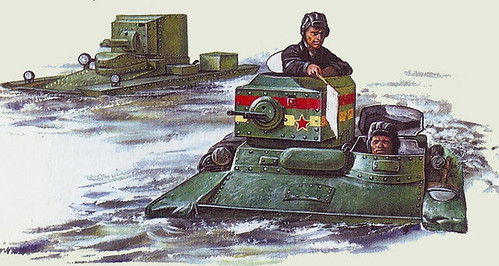 Raider-Class Amphibious Assault Vehicle:
Raider-Class Amphibious Assault Vehicle: A recent, fully-amphibious light tank design. The standard version mounts a .50 caliber machinegun, and the heavily-modified Type C (shown left) mounts a 30mm autocannon. But firepower is not the main function of either model: They act primarily for suppression and mobile cover to aid marine infantry.
 Sledgehammer-Class Mobile Artillery:
Sledgehammer-Class Mobile Artillery: The slower, heavier cousin of the Rioter, intended to occupy rear lines and deliver long-range support. It has some light armor plating meant to protect against shrapnel and bullets, but is not meant to trade shots with armor. Its main weapon, a 120mm howitzer with a protected loading compartment, has an unusually long barrel to achieve impressive ranges. Most currently-employed models are equipped with mounted machine-guns and extra armor plates to protect the angling rails
 Type-100 Veroveraar All-Terrain IFW:
Type-100 Veroveraar All-Terrain IFW: Currently in prototype stage, the Veroveraar is a joint project between the Revolutionary Guard and the Legermacht van de Bondsrepubliek. It is a heavily-armored walker-tank capable of operating on ground inaccessible to normal tanks, such as hilltops. It is armed as follows: one 30mm autocannon and one 0.50 cal machine-gun in the turret, one 0.50 cal machine-gun in the front, two rapid-fire heavy infantry mortars facing forward from the rear section, and two backwards-facing .50 cal machine-guns atop the rear section. It is designed to accompany infantry for support, suppression, and mobile cover. In addition to providing multiple layers of automatic fire at several angles, its two mortars can function either as light artillery or to launch flares or smoke-grenades for the infantry. It is believed that the Type-100 will be especially invaluable to mountaineer divisions, which normal armor cannot access.
 Type 121-B Vooruitgang Diesel-Electric Hardsuit:
Type 121-B Vooruitgang Diesel-Electric Hardsuit: An adaptation of a NFRU design (121-A) intended for storm-troopers. The Revolutionary Guard model is less heavily-armored than the Federation model, but rounds its plates for better deflection. The Guard model also carries less weapons, and it is topped with acrylic glass cockpit shield instead of a metal plate with a slit. With these changes, it does not hit as hard as the 120-A and cannot take as much sheer punishment. But in exchange, the hardsuit is swifter, and the pilot has greater range of vision and movement. Thus, the 121-B meshes better with the Guard's mobile doctrine than the 121-A, which is intended to be used en masse in a steady forward advance. The standard outfit is four .30 caliber machine-guns plus stick grenades, but some carry different main weapons: 1-2 machine-guns and an oversized flamethrower, or a single 30mm autocannon, or a 55mm recoilless rifle. The Vooruitgang just recently made it past its prototype stage, and mass production is due to begin very soon.
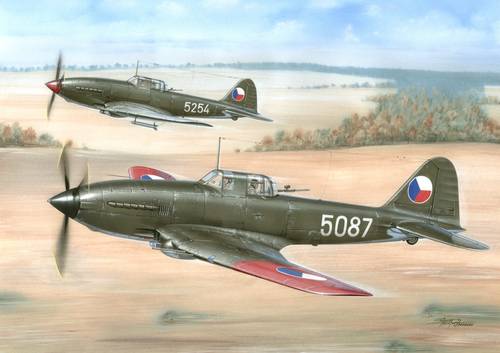 Brigand-Class All Purpose Fighter:
Brigand-Class All Purpose Fighter: One of the Guard's most versatile designs, useful for dive-bombing, close air support, and dogfighting. The medium-armored Brigand is armed with two 20mm autocannons and two .50 caliber machine-guns in the wings, and a heavy machine-gun for the rear gunner. It can carry an up to ~300kg payload. It has been disappearing from army aviation to make room for devoted attackers and interceptors, but its carrier-adapted version remains the most popular model in the navy.
 Bandit-Class Air Superiority Fighter:
Bandit-Class Air Superiority Fighter: A fast, lightly-armored fighter designed particularly for dogfighting and destroying bombers. The Bandit has a powerful engine for its size and mounts all of its weapons near the center for accuracy: One 20mm autocannon through the nose and two .50 caliber machineguns on the fuselage. It is cheaper to produce and more fuel-efficient than Brigands or Heroes, and it is much faster on the climb. It is used in both army and navy aviation, particularly for defending fleets and airspace.
 Hero-Class Attacker:
Hero-Class Attacker: The Guard's most recent design, a twin-engine single-pilot aircraft with a single gunner in the rear. It is designed for close air support, in which it has proven itself magnificent far beyond initial expectations. It has quickly become the army's most popular design, displacing the Brigand. For the moment, there is no satisfactory variant for carrier-based takeoff and landing. The Hero boasts thicker armor without seriously compromising speed, double the maximum feasible payload, more ammunition capacity, and heavier armament (two .50 caliber machine-guns and two 30mm autocannons under the nose, plus a double .50 machine-gun in the rear turret). Though it is a little slower to turn and climb than the Brigand, its heavier armor is worthwhile compensation, and a skilled pilot can use it effectively in dogfighting on the attack. But on the defensive, it is better to rely on quicker-climbing Brigands or -even better- Bandits for a more rapid response to enemy bombers and attack aircraft.
 Instigator-Class Light Bomber:
Instigator-Class Light Bomber: Another recent design, meant to strike tough enemy positions from relatively high altitudes. The Instigator is heavily-armored but compact with oversized engines and can carry a 1,200kg payload, leaving room for only a single defense machine-gun turret. It may fly with Bandit escorts, or simply depend on its uncanny maneuverability and thick armor to survive runs.
 Mob-Class Heavy Bomber:
Mob-Class Heavy Bomber: These are usually used as paratrooper planes, since the Revolutionary Guard's air doctrine does not generally call for strategic bombers. But in some cases, particularly when targeting extensive and well-defended military installations, a squadron of Mobs may be deployed. Though not huge by international standards, these are the largest planes the Guard. Each has a payload capacity of 4,000kg or 40 soldiers and three 20mm autocannon turrets (frontal, dorsal, and rear).
 Propagandist-Class Scout:
Propagandist-Class Scout: A special gyroplane used for scouting, artillery-spotting, and anti-submarine runs. With a very short takeoff period, it can deploy relatively quickly, and its ability to hover in mid-air is indispensable in certain situations (particularly bombing submarines). The Propagandist is very lightly armored and carries only a single medium machine-gun for defense.
 Pirate-Class Gunship
Pirate-Class Gunship One of the Guard's most unique designs, descended from jury-rigged transports used by anarchists and pirates. Its armor is deceptively thick, and likewise its unspectacular-looking engines are quite powerful. The Pirate has an extremely large fuel capacity, making it perfect for long-distance deployment of air mobile battalions. In general, the landing bay holds at least one Fist-Class Assault Truck to lead the disembarkment, shielding the troops behind. Standard load is one Fist, two Rioters, and fifty foot soldiers. Another common load is a single Scythe-Class tank and two Rioters. The gunship has a single, double 20mm autocannon turret meant to aid in suppressing the enemy, and it sometimes carries rockets as well, but it is not designed to defend itself against other aircraft. It is almost always accompanied by Heroes or Brigands.
The People's Militia System:Every member-union of the Revolutionary Syndicalist International is expected to maintain and drill its own militia(s), usually organized by work-place or cooperative. Unions in liberated territory can generally depend on Brouges to supply weapons and ammunition, but those in oppressed territory must navigate local conditions. They may tap into the black market, work with sympathizers in the military, or even construct makeshift weapons of their own. When called to arms, militias in liberated territory coordinate with the Revolutionary Guard, while those in oppressed territory must either send their troops in the general direction of the front to link up with the rest or, if they are in the territory of the enemy, prepare to wage a guerilla war from within.
People's Militia soldiers are in some sense volunteers, since there is no direct conscription in the RSI. Those who are most devoted to the cause or best adapted to contribute as soldiers tend to offer themselves as candidates. However, since every union is required to maintain a militia of at least 1/10 its membership, there are some cases of draft-like actions: at best this may be pressure from friends and coworkers, at worst union representatives may round up choice workers against their will to make their quota. Fortunately, these tend to be rare cases, and even for those that aren't, the permanent nature of the militia means that every union's force builds a sense of commitment and group cohesion over time.
The exact number of People's Militia soldiers that would mobilize in response to a call to arms is uncertain, and would depend heavily on several factors, such as whether Syndintern member nations had already raised levies or militias. But at the very least, the RSI can depend on the 2 million registered People's Militia soldiers in the province of Brouges. The NRFU is also considered a relatively dependable mobilization reserve, with 3 million registered People's Militia soldiers. Militias in the Dereham Republic are more uncertain, since the government there is more centralized and has conscription authority. The official numbers hover around 1 million, expected to skyrocket if and when Dereham joins Syndintern.
 People's Militia
People's Militia General Infantry
General Infantry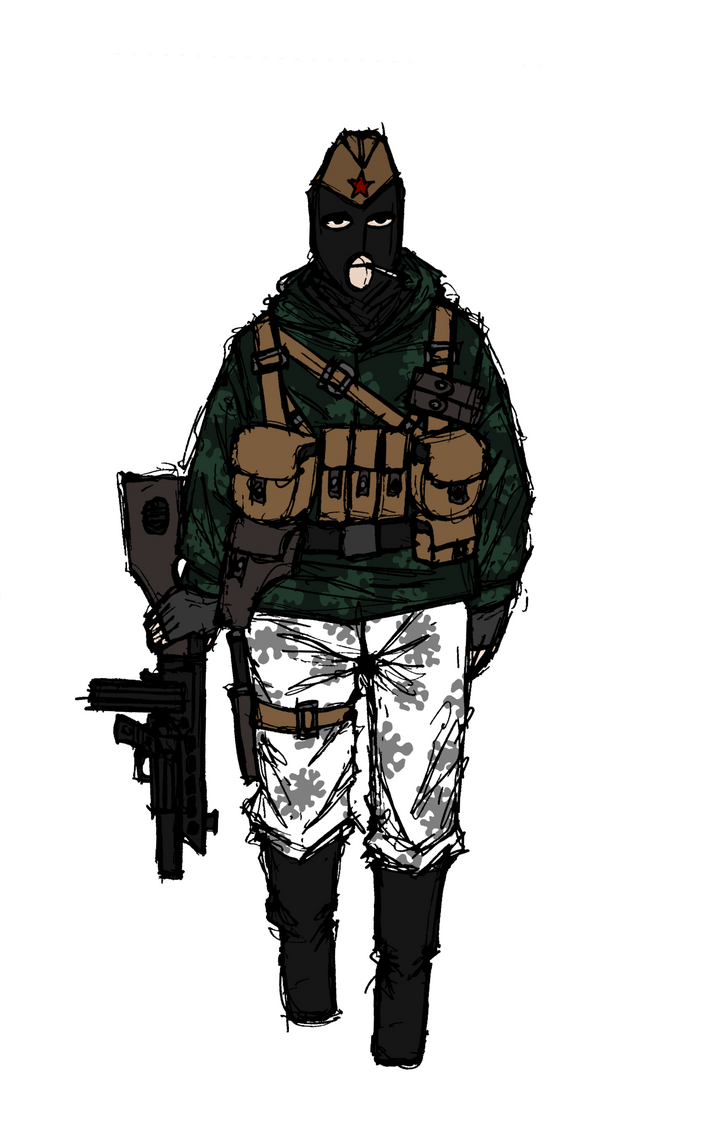 Airborne Infantry
Airborne Infantry[img][/img]
[b][/b]
"I read that mess, can we start already!?"

